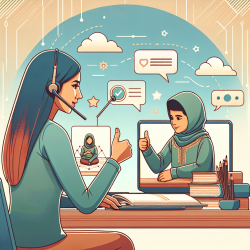Introduction
In the bustling environment of a preschool, the cacophony of young voices and activities is a familiar backdrop. However, the implications of such noise levels on children's communication and voice health are profound, as highlighted by the research titled The Others Are Too Loud! Children’s Experiences and Thoughts Related to Voice, Noise, and Communication in Nordic Preschools. This study offers critical insights into how children perceive and are affected by noise, providing valuable guidance for speech-language pathologists and educators aiming to enhance communication outcomes in early childhood education settings.
Understanding the Research
The study conducted interviews with children from Finland, Sweden, and Iceland to explore their experiences and thoughts regarding noise and communication in preschools. It revealed three main themes: Experiences, Environment, and Strategies. Notably, children expressed awareness of noise levels, attributing them primarily to their peers, and described the impact of noise on their ability to communicate and hear effectively.
Children's bodily and emotional experiences were often linked to noise, with many reporting sore throats and discomfort. Despite recognizing the challenges noise posed to hearing, there was less awareness of its effects on their voices. This gap underscores the need for targeted interventions to educate children about voice care and strategies to manage noise.
Practical Implications for Practitioners
For practitioners, the study emphasizes the importance of creating acoustically favorable environments in preschools. Here are some actionable strategies based on the research findings:
- Acoustic Modifications: Implement sound-absorbing materials and design changes to reduce reverberation and background noise, facilitating clearer communication.
- Voice Care Education: Develop educational programs to teach children about voice health, including the impact of shouting and strategies to rest their voices.
- Interactive Noise Management: Introduce games and activities, such as the "silent game" or "whisper lunch," to encourage quieter communication and reduce overall noise levels.
- Teacher Training: Equip educators with techniques to manage classroom noise and use amplification tools effectively to ensure they are heard without straining their voices.
Encouraging Further Research
While the study provides a foundation, further research is needed to explore the long-term effects of noise on children's voice development and communication skills. Investigating the impact on children with special needs or those learning in a second language could offer additional insights into tailored interventions.
Conclusion
The findings from this research are a clarion call for educators and speech-language pathologists to address the challenges posed by noisy preschool environments. By implementing strategic changes and fostering awareness, we can empower children to communicate more effectively and protect their vocal health.
To read the original research paper, please follow this link: The Others Are Too Loud! Children’s Experiences and Thoughts Related to Voice, Noise, and Communication in Nordic Preschools.










